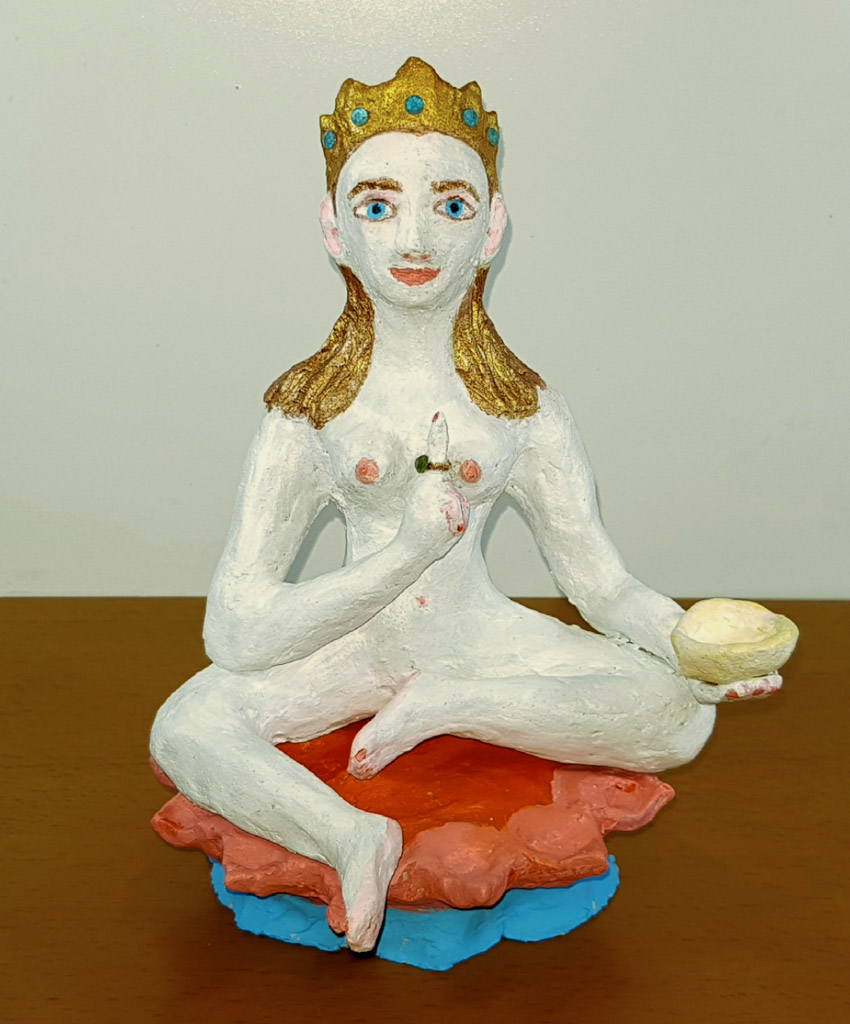Retelling: Vova Pyatsky and Smadar Pyatsky (based on the translations of the suttas published on Theravada.ru and SuttaCentral.net)
Russian Version: Чула сиханада сутта, Малая сутта Львиного Рыка, Мадджхима Никая 11 | Три Ваджры
Translation to English: Roni Sherman and Marina Sherman
Introduction
In a conversation with disciples, the Buddha proclaims that only among followers of His Teaching are there beings who possess four attainments: entrance into the stream of liberation from suffering, return for the last time, no return and complete extinguishment of suffering. To understand the given claim, we have to compare it to another thought of the Buddha: any Teaching in which the Noble eightfold Path of liberation from suffering is found is true (conversation with Subbadha, Mahaparinibanna Sutta, Digha Nikaya 16). If the path is not found there, the teaching is not true or complete. The Buddha’s claim concerning the exclusivity of His Teaching does not come from a desire to rise above other teachers but from observation of the flaws which arise in the minds of followers of different doctrines based on unreliable foundations. In the sermon the Buddha describes defilements whose presence in teachings makes them ineffective at attaining liberation from suffering.
Vices which prevent correct understanding of the goal
Passion, anger, the wandering of the mind, ignorance, prejudiced attitude and desire to grow in worldly influence — these vices do not allow one to correctly see the goal.
The Cause of the Rise of vices
Two Views
Faith in existence and faith in non-existence are irreconcilable. Followers of one faith oppose followers of the other. Those faiths arise from the thirst to exist or the thirst to not exist, and they give rise to passion and anger.
The Four Types of Obsession
There is obsession with sensual pleasure, there is obsession with beliefs, there is obsession with religious notions about purity and attaining prosperity, there is obsession with notions about the self.
When some teachers and instructors do not understand the danger of obsession with sensual pleasure, the result of their teaching will be the development of thirst, the rise of extreme views, passion and anger.
When they do not understand the danger of obsession with beliefs, the result of their teachings will be the development of delusions, stagnation, and ignorance.
When they do not understand the danger of obsession with religious notions about purification and rituals whose purpose is worldly prosperity, their teachings will develop prejudiced judgements about pure and impure, passion for the fulfillment of worldly desires, thirst.
When they do not understand the danger of obsession with notions about the self, the result of their teachings will be a desire to grow in worldly influence, to rule.
The Rise of Obsession
Obsession arises from absorption in the activity of the senses. Feelings arise from the contact of the six types of consciousness with phenomena. The six types of consciousness arise from the union of consciousness with the body. The union of consciousness with the body arises from the separation of consciousness with a sense of self. Separation of consciousness with a sense of self arises from impulses of memory and volition accumulated in past incarnations. Impulses of memory and volition arise from ignorance.
Conclusion
The Buddha’s instruction is called “The Lion’s Roar” since He asserts the perfection and completeness of his Dhamma.
Once ignorance is abandoned, enlightenment arises, obsession of all kinds disappears, extreme views disappear, the causes of suffering disappear, suffering disappears.
Author
Retelling: Vova Pyatsky and Smadar Pyatsky (based on the translations of the suttas published on Theravada.ru and SuttaCentral.net)
Russian Version: Чула сиханада сутта, Малая сутта Львиного Рыка, Мадджхима Никая 11 | Три Ваджры
Translation to English: Roni Sherman and Marina Sherman
Introduction
In a conversation with disciples, the Buddha proclaims that only among followers of His Teaching are there beings who possess four attainments: entrance into the stream of liberation from suffering, return for the last time, no return and complete extinguishment of suffering. To understand the given claim, we have to compare it to another thought of the Buddha: any Teaching in which the Noble eightfold Path of liberation from suffering is found is true (conversation with Subbadha, Mahaparinibanna Sutta, Digha Nikaya 16). If the path is not found there, the teaching is not true or complete. The Buddha’s claim concerning the exclusivity of His Teaching does not come from a desire to rise above other teachers but from observation of the flaws which arise in the minds of followers of different doctrines based on unreliable foundations. In the sermon the Buddha describes defilements whose presence in teachings makes them ineffective at attaining liberation from suffering.
Vices which prevent correct understanding of the goal
Passion, anger, the wandering of the mind, ignorance, prejudiced attitude and desire to grow in worldly influence — these vices do not allow one to correctly see the goal.
The Cause of the Rise of vices
Two Views
Faith in existence and faith in non-existence are irreconcilable. Followers of one faith oppose followers of the other. Those faiths arise from the thirst to exist or the thirst to not exist, and they give rise to passion and anger.
The Four Types of Obsession
There is obsession with sensual pleasure, there is obsession with beliefs, there is obsession with religious notions about purity and attaining prosperity, there is obsession with notions about the self.
When some teachers and instructors do not understand the danger of obsession with sensual pleasure, the result of their teaching will be the development of thirst, the rise of extreme views, passion and anger.
When they do not understand the danger of obsession with beliefs, the result of their teachings will be the development of delusions, stagnation, and ignorance.
When they do not understand the danger of obsession with religious notions about purification and rituals whose purpose is worldly prosperity, their teachings will develop prejudiced judgements about pure and impure, passion for the fulfillment of worldly desires, thirst.
When they do not understand the danger of obsession with notions about the self, the result of their teachings will be a desire to grow in worldly influence, to rule.
The Rise of Obsession
Obsession arises from absorption in the activity of the senses. Feelings arise from the contact of the six types of consciousness with phenomena. The six types of consciousness arise from the union of consciousness with the body. The union of consciousness with the body arises from the separation of consciousness with a sense of self. Separation of consciousness with a sense of self arises from impulses of memory and volition accumulated in past incarnations. Impulses of memory and volition arise from ignorance.
Conclusion
The Buddha’s instruction is called “The Lion’s Roar” since He asserts the perfection and completeness of his Dhamma.
Once ignorance is abandoned, enlightenment arises, obsession of all kinds disappears, extreme views disappear, the causes of suffering disappear, suffering disappears.

